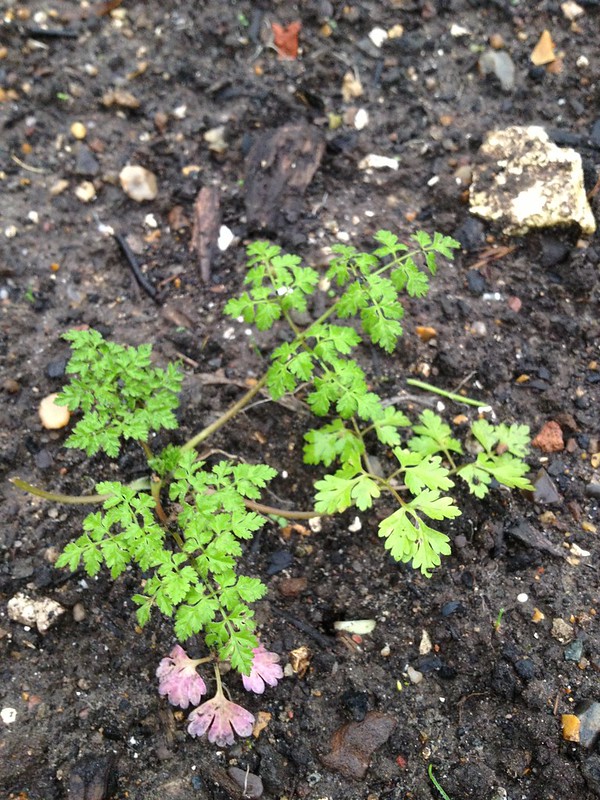 |
| One of the plugs we planted |
My colleague said they liked firm soil, so I shouldn't dig too big a hole for them, which I was careful about. But otherwise, I treated it like I do any other seedling. Having never received much practical gardening training I guess I developed my own ways, good or bad, even if I always try to improve them as I learn more about plants and techniques.
It turned out I may have planted the plugs too low and pressed the soil down rather than around the sides. It also turned out that Anthriscus is rather sensitive to root disturbance and my colleague was worried I might have caused a check in growth. I really hope not, and the various books I consulted tonight make no particular warning about careful handling, but maybe it's just taken for granted, and I will keep an eye on the plants, and surely be more careful in the future with planting requirements.
In the process of learning I got told a very memorable story on planting that applies to lettuce: too loo it won't grow, too high it will die. However, as I was reading about lettuces, I think that may have originated from instructions for dealing with cut-and-come-again leaves as cutting them too low into the crown will cause them to take a long time to grow back (it is the same with grass and overgrazing) while too high might cause them to rot and die (very much like the dying back of snags when you prune badly).
In any case, this made me research the plant, which has been used as a culinary herb and salad leaf since Roman times (when it was introduced to Britain) for its delicate aniseed flavour, which does not withstand drying or long cooking (freezing is the best way to preserve it). It has also medicinal properties as a tonic: it contains vitamin C, carotene, iron and magnesium.
 |
| An established chervil plant |
grow it in between rows of other plants that may shade it). A hardy plant (to about -10C), it can be sown late for winter leaves, especially when protected. We were planting it out in the herb garden because it will provide useful light-green and feathery ground cover over winter, with its low growing habit. It is said to be a good companion plant for radishes, which it makes hotter, and for lettuces, which it may protect from ants, aphids and slugs.
Seed of Anthriscus cerefolium is not viable for long, only about a year, and the plant may suffer from greenfly. Named cultivars are available, 'D'Hiver de Bruxelles' for example is mentioned in the RHS Plant Finder, and there's a curly leaf form of no particular culinary value.
No comments:
Post a Comment